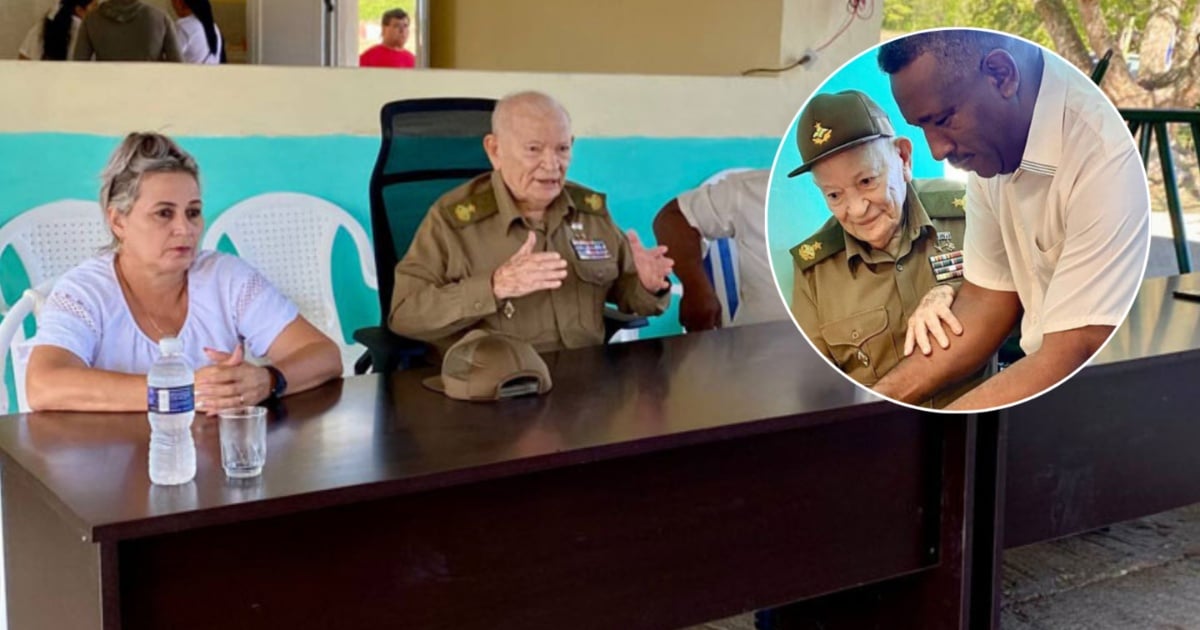At the age of 97, Guillermo García Frías, a prominent figure from the "historical generation" of the Cuban revolution, made a public appearance this Saturday to inaugurate the Oasis Assisted Reproduction Laboratory in Jimaguayú, Camagüey. This facility is dedicated to cattle fertilization, aiming to bolster Cuba's struggling livestock industry.
According to a report from the state-run Cuban News Agency (ACN), García Frías highlighted that the "modernized" facility, which received an investment exceeding half a million euros, exemplifies the role of the state economy in enhancing the future of the people. The center will conduct procedures such as egg extraction, maturation, and fertilization up to the embryonic stage. They currently have 150 donors, with plans to increase to 300, predicting a monthly production of 300 to 400 embryos.
These embryos will either be directly implanted into permanent recipient cows or preserved by freezing in straws, accumulating various breeds to provide implantation services to interested producers. The laboratory will handle breeds like White Zebu, Bermejo, Chacuba, Criolla, Santa Gertrudis, and Siboney, aspiring to achieve a 38 to 40 percent "technical efficiency" with embryo application.
Known as the "Cuban ostrich czar," García Frías is among the most influential retired military officials within the regime's power structure. He, along with his sons and grandsons, oversees the Flora and Fauna Business Group, a conglomerate dedicated to the conservation of protected areas in Cuba.
García Frías became a subject of ridicule and popular memes after claiming on the television program Mesa Redonda in 2019 that the country was "cultivating and developing" ostriches, a bird purportedly capable of producing "more than a cow." His current focus on cow insemination echoes one of Fidel Castro's obsessions: developing a breed that combined excellent milk and meat qualities. To achieve this, Castro imported cows and bulls to crossbreed with local breeds like Zebu, aiming to produce more productive and climate-resistant animals.
This project was intended to flourish through the genetic crossbreeding of various imported cattle breeds, making artificial insemination a new objective for the communist leader. In 1981, Fidel Castro announced a new record set by Cuba's most famous cow, Ubre Blanca, claiming it produced 89.9 liters of milk in a single day. The cow, protected by security forces, was part of a genetic manipulation program devised by Castro to significantly boost the country's milk and meat production.
Understanding Cuba's Livestock Initiatives
What is the purpose of the Oasis Assisted Reproduction Laboratory in Camagüey?
The Oasis Assisted Reproduction Laboratory in Camagüey aims to enhance Cuba's livestock industry by focusing on cattle fertilization. It conducts procedures like egg extraction, maturation, and fertilization to produce embryos for implanting in cows or freezing for future use.
Who is Guillermo García Frías?
Guillermo García Frías is a notable figure from the Cuban revolution's "historical generation." At 97, he remains influential within the regime's power structure and oversees the Flora and Fauna Business Group, focusing on conservation in Cuba.
How does the laboratory plan to support cattle breeding in Cuba?
The laboratory plans to support cattle breeding in Cuba by producing 300 to 400 embryos monthly. These embryos will be implanted into recipient cows or preserved for future use, aiming to increase the efficiency of breeding high-quality cattle breeds.
